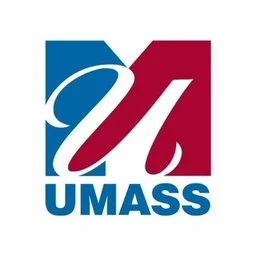Assessment 4; Patient, Family, or Population Health Problem Solution . 1 Patient, Family, or Population Health Problem Solution Student's Name Institutional Affiliation Course Name Professor's Name Date
Place Your Order NowAssessment 4; Patient, Family, or Population Health Problem Solution . 1 Patient, Family, or Population Health Problem Solution Student's Name Institutional Affiliation Course Name Professor's Name Date
2 Patient, Family, or Population Health Problem Solution Patient Problem It is alarming to note that over half of adult Americans suffer from hypertension or "high blood pressure." Muntner et al. (2018) state that only one in four Americans can manage their condition. Hypertension (HTN) is a prevalent chronic condition that frequently eludes diagnosis on a global scale, owing to a multitude of contributing factors. Numerous underlying pathophysiological problems are linked to its growth, underscoring the pressing need for efficient therapies (Muntner et al., 2018). According to Zhou et al. (2021), hypertension is defined as a hemodynamic disease associated with an increase in peripheral vascular resistance, highlighting the disorder's complexity and potential severity if left untreated. Hypertension can have serious side effects, including myocardial infarction, renal failure, stroke, and even death if it is not diagnosed and treated properly early. These concerning results led me to choose this specific population issue for my capstone research. My collaboration with Alejandro, a 70-year-old Hispanic man with a medicinal history of obesity, high HDL cholesterol, and gastritis, proved crucial during this evaluation. Alejandro had recently moved to live with his son's family from Colombia, but he was hospitalized for observation due to severe sadness. During his hospital stay, a nurse diagnosed him with hypertension. Despite being prescribed hypertension medications and having received information on medication adherence, Alejandro did not follow the recommended treatment regimen. The patient chose a sporadic blood pressure monitoring approach, augmenting with medicine only when readings were elevated, and continued with their prior lifestyle habits. Alejandro's noncompliance with his hypertension therapy required the creation of a customized intervention plan that gave the patient's needs and concerns top priority. An in-depth
3 analysis of Alejandro's cultural background and lifestyle was crucial in revealing the factors that led to his non-compliance. It became essential to actively include his family in the care provision due to his recent migration and the ensuing shift in his residential environment. Involving his child and other family members proved crucial, offering vital encouragement and support. A successful intervention strategy included culturally competent teaching sessions in Spanish that emphasized the value of regular physical exercise, dietary changes, and medication adherence. These sessions, aimed at Alejandro's family, stressed their importance to his health journey. These instructional seminars might be held at nearby community centers or places of worship to guarantee a bigger audience, improving accessibility and community participation. Alejandro's path to improved health depends on individualized treatment and efficient systemic communication. When it comes to addressing Alejandro's worries over drug side effects and misunderstandings, a multilingual healthcare professional is essential. Through a comprehensive evaluation of Alejandro's gastritis and possible drug interactions, the provider can jointly explore his antihypertensive options and develop an appropriate medication regimen that will minimize side effects and maximize efficacy while promoting his comfort and compliance. In addition, given his obesity and high HDL values, a customized diet and exercise regimen created with a physical therapist and dietician is important. A supportive environment is made by enrolling Alejandro and his family in heart-healthy Hispanic cooking lessons, and healthier eating habits are fostered collectively. Frequent follow-up consultations with medical professionals, such as a physical therapist, dietician, nurse, and doctor, enable ongoing evaluation of his development and guarantee his well-being. With the help of telehealth services, Alejandro may stay in touch with his medical professionals and address any issues between in- person visits. Alejandro's total well-being is improved by this inclusive intervention plan that
4 addresses his cultural, societal, and medical variables and allows him to take control of his well- being. Leadership and Change Management Effective management and leadership are critical in the field of health care, particularly when it comes to treating illnesses like hypertension in older patients like Alejandro. The function of a nurse leader as a communication linchpin inside the institution is crucial, as they connect and facilitate communication between healthcare professionals, nurses, clients, social workers, and patients' families (Mills et al., 2018). Ensuring patient safety and reducing medical errors is achieved by facilitating regular updates and briefings using oral and written communication, thereby avoiding communication failures. The leader's capacity to cu
Order Now






